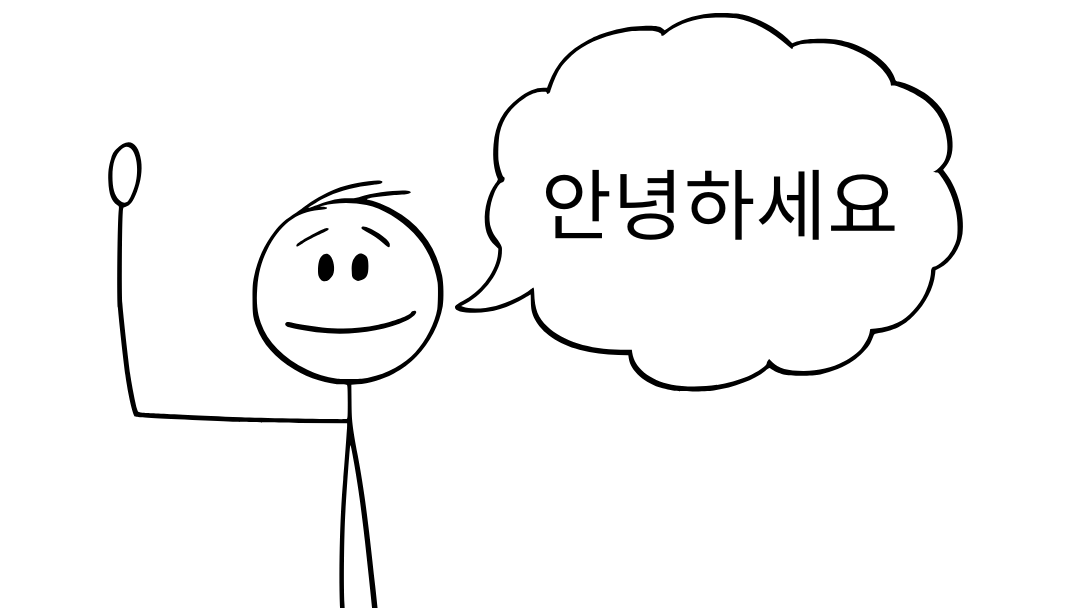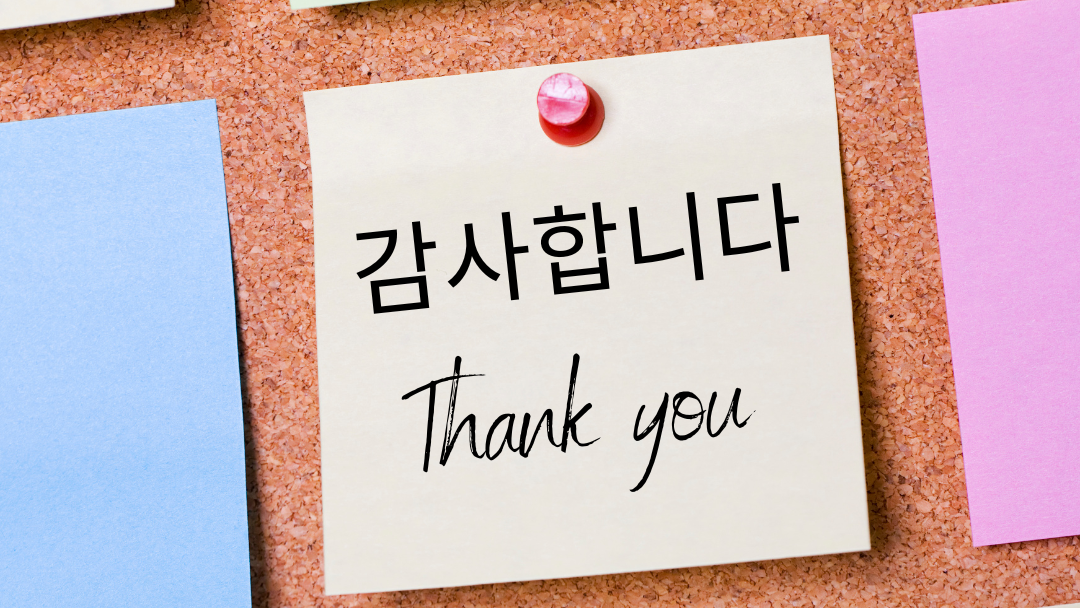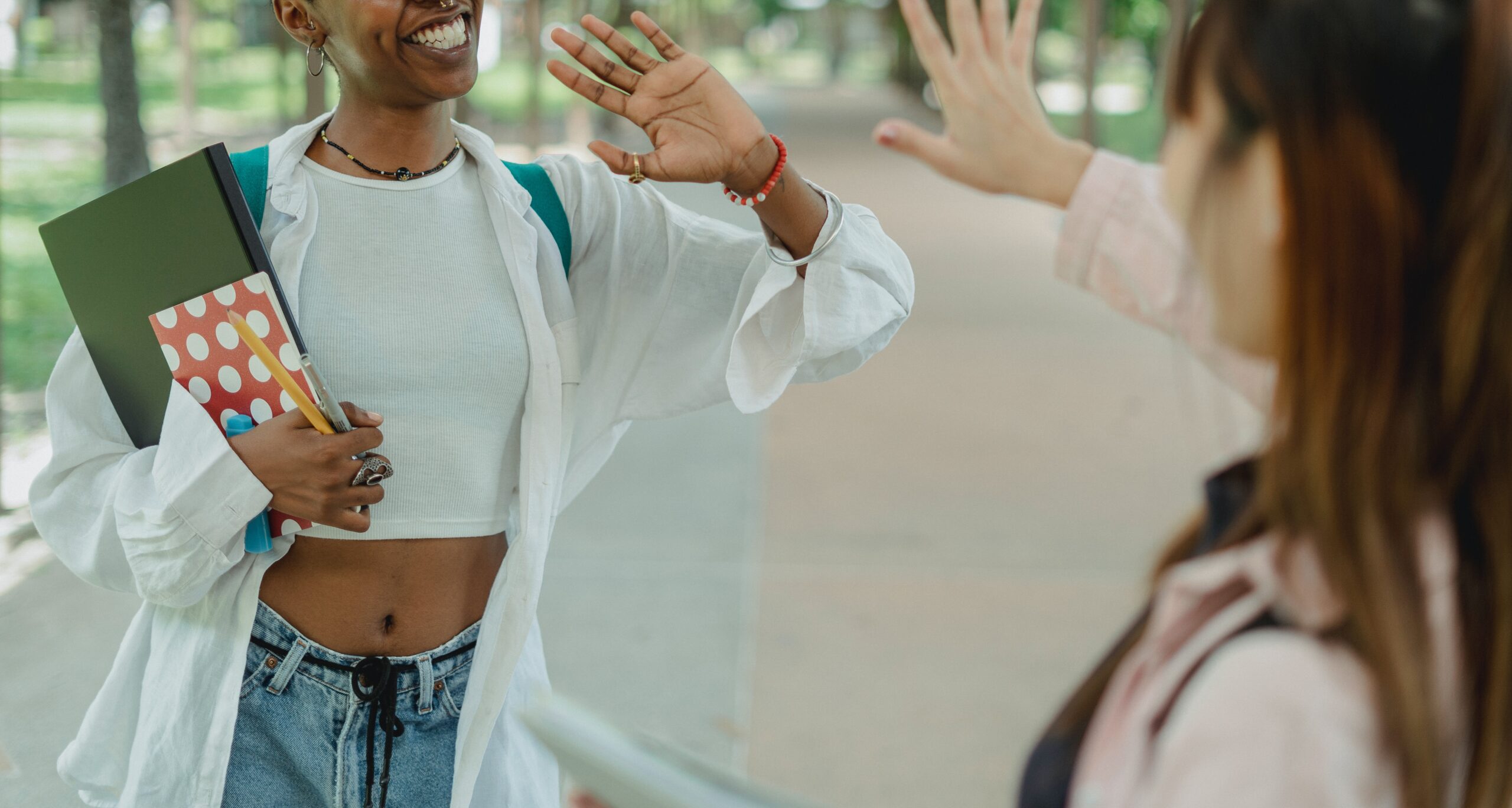Learning a few basic greetings can connect with Korean locals and immersing yourself in the vibrant Korean society.
In this post, we will explore how to say “hi/hello” and “thank you” in Korean. It provides you with a stepping stone to start your Korean language journey.
1. “Hi/Hello” in Korean : 안녕하세요 (Annyeonghaseyo)

One of the most common ways to greet someone in Korean is by saying “안녕하세요” (pronounced as “Annyeonghaseyo”). This is a polite and formal greeting suitable for most situations.
It’s used when meeting someone for the first time, addressing someone older or in a higher position, or in formal settings. “안녕하세요” can be translated as “good day” in English.
You can also use “안녕” (pronounced as “Annyeong”) informally to greet your friends or peers. It is similar to saying “hey” or “bye” in English.
2. “Thank You” in Korean : 감사합니다 (Gamsahamnida)
Expressing gratitude is important in any culture, and in Korean, you can convey your appreciation by saying “감사합니다” (pronounced as “Gamsahamnida”).

This phrase is commonly used to say “thank you” in a formal and polite manner. Whether someone has helped you, provided a service, or shown kindness, saying “감사합니다” will show your gratitude and make a positive impression.
You can also use “고마워” (pronounced as “Gomawo”) informally to say “thank you” among friends or peers.
Koreans appreciate when foreigners make an effort to use the appropriate level of formality and politeness in their greetings. We highly encourage use “안녕하세요” and “감사합니다” in formal settings.
It’s also important to note that the level of formality in Korean language can change based on the age, social status, and relationship with the person you’re speaking to. For example, you would use a more formal greeting when meeting someone older or in a higher position than you.

Learning basic greetings in Korean opens the door to meaningful interactions and cultural understanding. By saying “안녕하세요” (Annyeonghaseyo) for “hi/hello” and “감사합니다” (Gamsahamnida) for “thank you,” you’ll be able to connect with Koreans in a polite and respectful manner.
If you’re planning to visit Korea or interact with Koreans in a formal setting, recommend learning more about Korean etiquette and customs. This will help you navigate social situations with ease and show your respect for the local culture.
Remember to adjust the level of formality based on the situation and to keep practicing your pronunciation. So go ahead, start incorporating these Korean greetings into your daily life, and embrace the joy of learning a new language.
